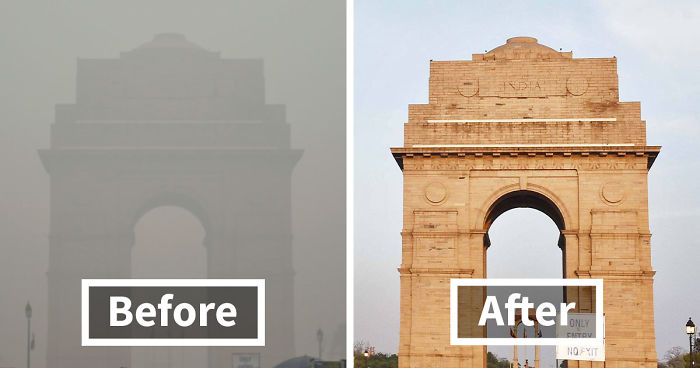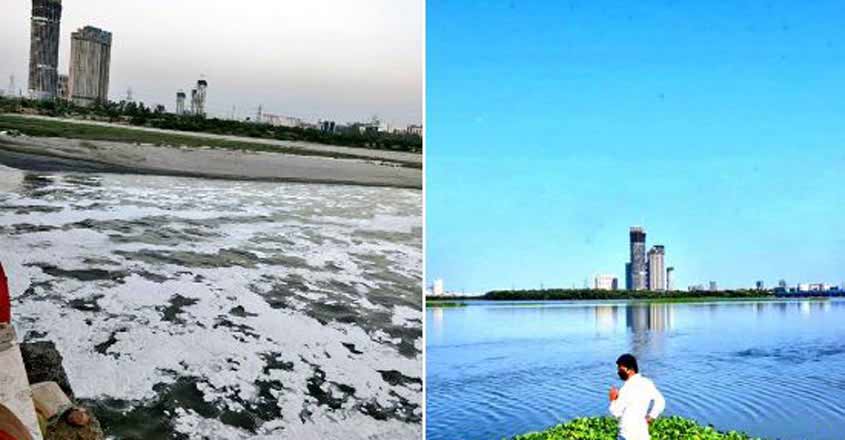COVID-19: Crisis for humans, rehab for nature.
The Coronavirus or COVID-19 has caused extreme carnage throughout the world. The virus, though not as deadly as previous viruses encountered by humans like SARS, MERS and H1N1, is extremely infectious. The rapidly spreading virus has now infected more than a million people worldwide and proven fatal for about 80,000 people, making it the most lethal pandemic of our times. The disease has caused a situation of panic worldwide, reducing bustling economies to stagnant countries under lockdown. The virus has also posed a challenge for the medical world, our medical prowess looks meagre in front of this microscopic virus. It is truly a nightmare for our community and also a test of our strength to combat future pandemics.
To control the spread of this deadly virus, many countries are under complete lockdown, with their entire population under self-isolation. This means complete shut down of several industries, manufacturing units, cessation of public transport and minimal traffic. The coronavirus has come out as a break for mankind which also means a massive cut-down on anthropogenic emissions. So, while the virus is poisoning humanity, it is in a way healing the nature. In heavily polluted countries like India and China, this transition is substantial enough to be visually perceived. Delhi, the most polluted city in the world which spends 365 days under gloomy grey skies is now witnessing bluer than ever skies as a consequence of people not stepping out.
It is ironical, how we humans who take the credit for changing the world positively, are actually changing it for worse through our activities.We can only wonder what the Earth would look like if our race didn't exist. The river Yamuna which flows through Delhi is the most polluted river of India. It is so contaminated that it smells as putrid as a sewer drain with water so dark, that it is unfit to even bathe in, let alone drinking. This is largely attributed to hundreds of industries and several industrial cities on the banks of the river. A large chunk of these industries discharge untreated effluents into the river, rendering it fetid and opaque. However, since the lockdown has been announced, there has been a considerable change in the appearance of the river. The foaming brown river has turned serene blue, leaving Delhites confounded.
However, visual appearances do not often emulate the truth. Therefore, we carried out a thorough analysis of Delhi's Air Quality by comparing the AQI , PM2.5, PM10 and NO2 data of 2019 and 2020 of the dates 24th March to 6th April. We used Central Pollution Control Boards Data and plotted the Data to notice a drastic improvement in air quality.
1. AQI 2019 v/s 2020
2. PM2.5 2019 v/s 2020
3. PM10 2019 v/s 2020
4. NO2 2019 v/s 2020
5. Mean AQI, PM2.5, PM10 and NO2 comparison from 24th March to 6th April
As seen graphically, there is a remarkable difference in air pollution levels between 2019 and 2020 on same dates. While we have been locked down in our houses, the nature is healing itself and that too with surprising alacrity. This teaches us that the Earth recovers very quickly, we just have to let it recover. It also gives us an idea of proposing annual two-week lockdowns not for coronavirus but for our planet. Governments can allow work-from-home for a 15-day period to let air quality and water quality ameliorate. If we can't to something for the planet, we can atleast do nothing by staying at home and restoring the serenity of nature. If we can do it for the virus, we can do it for the planet.
 |
| Image Credits: AFP and Hindustan Times |
 |
| Yamuna before lockdown vs after lockdown. Credits: Manorama News |
However, visual appearances do not often emulate the truth. Therefore, we carried out a thorough analysis of Delhi's Air Quality by comparing the AQI , PM2.5, PM10 and NO2 data of 2019 and 2020 of the dates 24th March to 6th April. We used Central Pollution Control Boards Data and plotted the Data to notice a drastic improvement in air quality.
1. AQI 2019 v/s 2020
2. PM2.5 2019 v/s 2020
3. PM10 2019 v/s 2020
4. NO2 2019 v/s 2020
5. Mean AQI, PM2.5, PM10 and NO2 comparison from 24th March to 6th April
As seen graphically, there is a remarkable difference in air pollution levels between 2019 and 2020 on same dates. While we have been locked down in our houses, the nature is healing itself and that too with surprising alacrity. This teaches us that the Earth recovers very quickly, we just have to let it recover. It also gives us an idea of proposing annual two-week lockdowns not for coronavirus but for our planet. Governments can allow work-from-home for a 15-day period to let air quality and water quality ameliorate. If we can't to something for the planet, we can atleast do nothing by staying at home and restoring the serenity of nature. If we can do it for the virus, we can do it for the planet.






Well written and well explained. World needs more of thinking and doing for the nature so as to protect it.
ReplyDelete